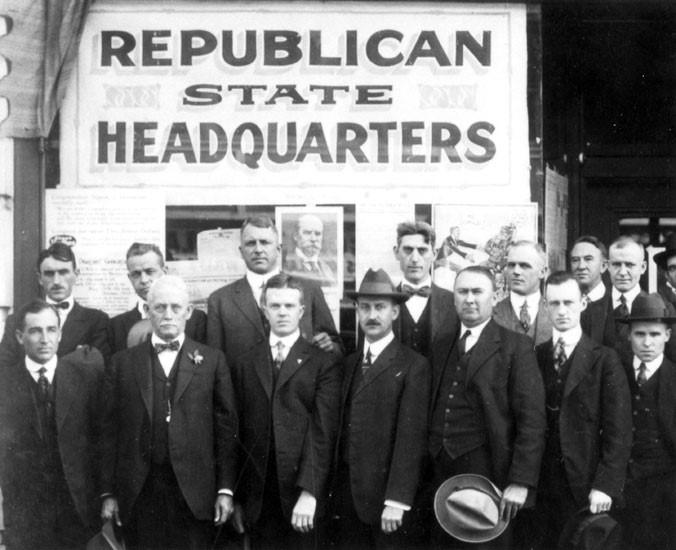Collaboration and Culture: Organizational Culture and the Dynamics of Collaborative Networks
Research Associate Professor Christopher Weare and Assistant Professor Nicole Esparza have been working with Professor Paul Lichterman, a sociologist from the Dornsife College at USC, on the question of what makes civic networks cohere and fracture over time and how these processes affect the ability of networks to support the work of non-profit and advocacy organizations. Their findings are in an article titled “Collaboration and Culture: Organizational Culture and the Dynamics of Collaborative Networks,” that will be submitted to the Policy Studies Journal, which is publishing a series of articles on the role of culture and cultural analysis in political and policy sciences. We talked with Weare and Esparza about this research and what the findings could mean.
How did ideas for the article come about? What made you want to write on the topic?
This project arose out of a series of conversations hosted by the Price School’s Civic Engagement Initiative, USCs Center for Religion and Civic Culture and later supported by the Bedrosian Center. Both of us were conducting research on civic networks and how these networks influence the performance of non-profit and civic groups. Lichterman was also deeply interested in civic groups and had studied them extensively in previous work, but from a cultural perspective. Through these conversations, it became clear that that the analysis of civic action required more attention to how culture is both a cause and a consequence of the shape of civic networks. We decided to explore these ideas further through an analysis of the structure of a specific civic field, and received funding from the National Science Foundation to collect data on the affordable housing field in Los Angeles.
What is the crux of your argument for the relationship between organizational culture and civic networks?
Culture is one of the most used yet least understood concepts in organizational science. This project strives to clarify what organizational cultures are and their role in guiding organizational actions by rooting culture in the everyday actions of organizations. These theories build on major contributions by Mary Douglas, Aaron Wildavsky, Paul Lichterman, and Nina Eliasoph. The central concept that drives this cultural analysis is that the institutional environments in which actors operate include styles of organizational action that strongly shape an organization’s way of collaborating with other organizations. The theory identifies three major cultural categories – individualistic, hierarchical, and egalitarian – and these categories lead to a number of propositions about the how organizational culture and promote or inhibit types of inter-organizational collaborations.
To research these propositions, this project combined deep ethnographic analysis of organizations with a social network analysis of the collaborations that existed between organizations. This mixed method approach allowed the research team to question how an organizations placement within a larger social structures influence their culture and how their culture lead it to choose certain partners.
What are the major findings of your research?
The civic field concerned with housing issues in Los Angeles includes non-profit organizations, civic associations, for-profits, and public sector agencies. Research assisted by Bedrosian Center funds focused on an advocacy coalition that was composed of non-profits and local governmental agencies. While these organizations within the advocacy coalition looked quite similar viewed from the outside, ethnographic research on their internal operations – the style in which members worked with one another and the manner in which the organization viewed their external environment – revealed two quite distinct cultural types. Some of the organizations practiced an individualistic culture that valued bargaining and strategic action, while another set practiced an egalitarian culture that valued community cohesiveness and authenticity.
These organizations worked together successfully for several years as they lobbied for major reforms to promote the availability of affordable housing in Los Angeles. During the study period, however, simmering tensions within the advocacy coalition led a number of organizations to split off and create a new advocacy coalition. This split was along cultural lines. All of the splinter organizations practiced an egalitarian culture while all of the organizations, save one, who remained in the core coalition practiced an individualistic culture. In the paper, the authors look at several competing explanations for this fissure, and find that none of them explain the contours of this fissure as well as the cultural factor—the organizational styles revealed by ethnographic research.
What are some conclusions or insights that you think people would find most interesting or surprising?
Researchers who have studied interorganizational collaborations have written about a host of problems that make such collaborations fragile. One main explanation is that the goals or interests of collaborating organizations may diverge, leading to tensions. Another is that maintaining productive collaborations is resource intensive and that either resources dry up or that organizations discover over time that the collaborative benefits do not justify the investment in resources. This research points to another important constraint on collaborative arrangements in that working across organizational boundaries can conflict with certain organizational cultures, particularly those that involve strong in-group solidarity. In these situations, collaborations can be particularly fragile because collaboration can threaten the implicit cultural rules that maintain organizational coherence. The paper ends with a simple set of questions researchers and practitioners may ask themselves about an organization to identify what type of culture characterizes that specific organization and identify collaborative tensions that are more likely to arise due to the biases and preferences of that culture.



